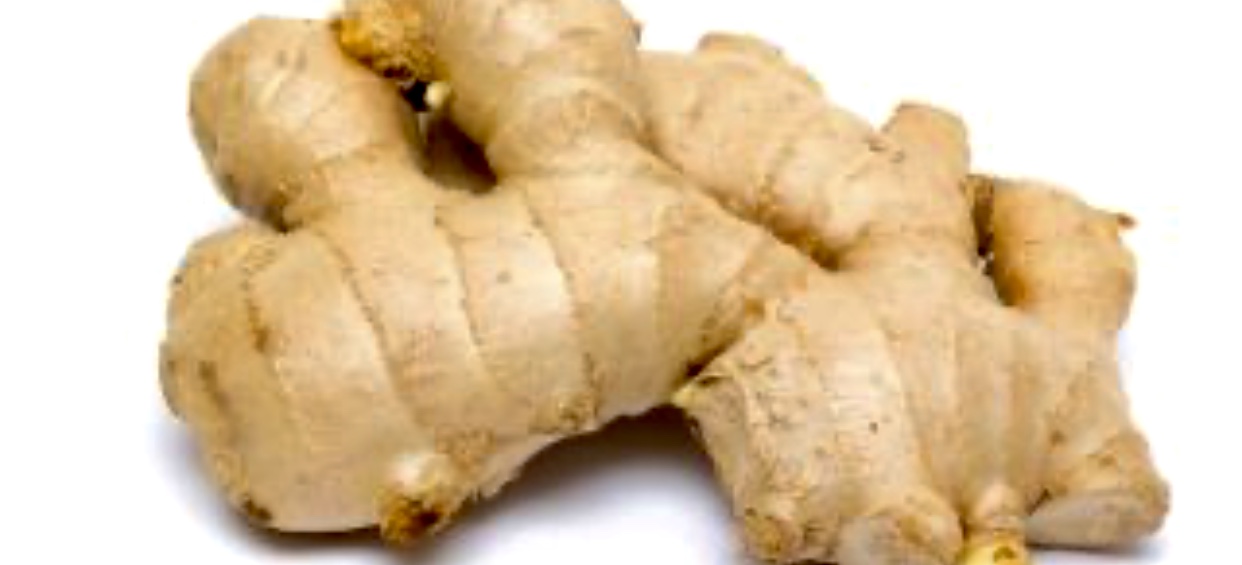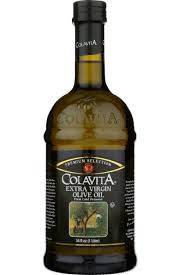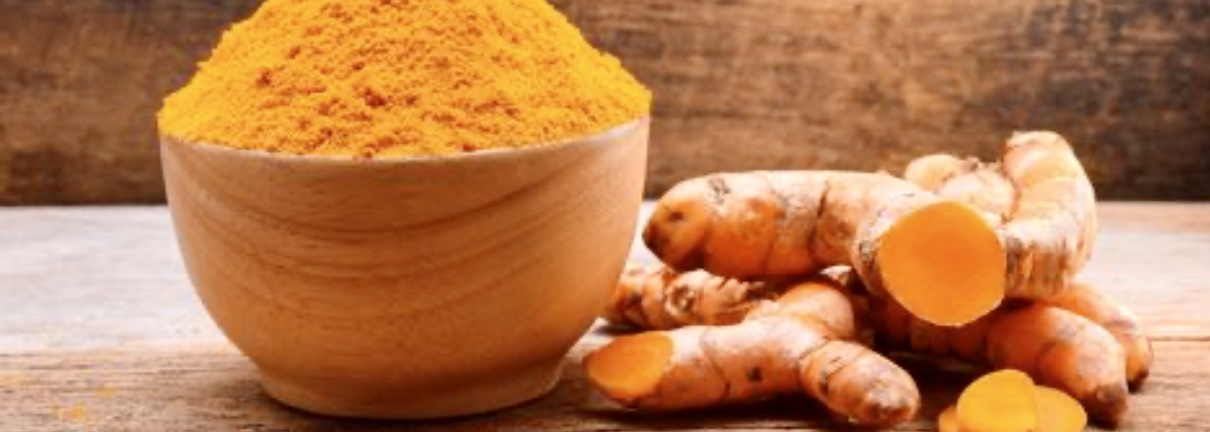
Looking to up the anti-inflammatory factor of your anti-inflammatory diet? Here are a few tricks I do to add an even EXTRA anti-inflammatory boost.
Garlic, garlic and more garlic
Garlic is believed to have WIDE SPREAD benefits that can aid in overall heart, brain and other essential organ and cardiovascular health, as well as help in the treatment or prevention of certain cancers (note that only some of these health claims are backed by research; click here to read more). Garlic contains diallyl disulfide, an anti-inflammatory compound that limits the effects of pro-inflammatory cytokines. Therefore, garlic can help fight inflammation and may even help prevent cartilage damage from arthritis (1).
In light of it’s many benefits, the bad breath just might be worth it (apologies now to all my friends who are probably still trying to get accustomed to the fumes of garlic that continually emanate from me).
If a recipe doesn’t call for it, I always add (with the exception of baked goods) at least 6 cloves. And when a recipe DOES call for it, I usually double or even triple it. I have yet to ruin a recipe with too much garlic (and trust me, I’ve pushed the limits). So go get your garlic on people!
Ginger

“Ginger has anti-inflammatory, antioxidant, and anticancer properties. Because of this, it’s thought to boost your overall immunity. For people with arthritis, its anti-inflammatory properties are of particular benefit. Ginger contains anti-inflammatory compounds that function in the same way as COX-2 inhibitors. COX-2 inhibitors are drugs used to treat pain and inflammation.” (2)
Neil (the hubs) once asked, “Do you think there is such a thing as too much ginger?” When it comes to Asian cuisine, we have tested this theory in various ways, often quadrupling the suggested amount of any recipe and have yet to find the limit (when cooked that is…raw ginger can have quite a bite to it that most people either love or hate). So, when I recipe calls for ginger, we go to town. Next time you see a recipe that calls for ginger, double or triple it and see what you think!
But I have also found ways to sneak it into (non-Asian) recipes without noticing or changing the flavour. I find myself starting almost all dishes with sautéed onions, garlic and ginger, whether or not the recipe even calls for any or all of these ingredients. Whether its a sauce, a stew, a chili, a soup, or baked dish, you’d be surprised how you can add a tbsp of minced ginger and not notice the taste. For example, the last recipe I posted was a Pasta Bolognese sauce and most would never think to add ginger but I threw some in and didn’t notice the taste at all. I encourage you to give it a try next time and just experiment a little.
Extra Virgin Olive Oil

I posted about the benefits of extra virgin olive oil a while back (click here to learn more and to also learn how to source the RIGHT olive oil to ensure proper health benefits) so I won’t go into too much detail here. But in short, and to copy/paste from Dr. Josh Axe, some of the benefits of Extra Virgin Olive Oil include:
-
- Fights inflammation
- Protects heart health
- Helps fight cancer
- Helps with weight loss and obesity prevention
- Supports brain health
- Fights mood disorders and depression
- Naturally slows aging
- May help lower risk of diabetes
- Is associated with lowered breast cancer risk
I’m always looking for ways to get EV olive oil (EVOO) into our bellies. (Fun fact: Dr. Gundry, the author of The Plant Paradox, aims to ingest 1 LITRE of EVOO PER WEEK and it has helped him to lose and keep off 75 lbs!) It’s as simple as doubling the amount a recipe calls for, or using it INSTEAD OF another less beneficial (and arguably harmful) oil including the likes of vegetable, canola, sunflower, safflower, peanut and soy oils. I have YET to find a recipe that calls for canola or vegetable oil, for example, that can’t be swapped out for EV olive oil (and this includes baked goods).
The exception is when cooking at temperatures above 400F as this tends to be the upper limit of EVOO’s smoke point. “Smoke point refers to the temperature at which an oil starts to burn and smoke. When you cook with oil that’s been heated past its smoke point, you do more than impart a burnt flavour to foods. Beneficial nutrients and phytochemicals found in many unrefined oils are destroyed when the oil is overheated. Overheating also creates harmful free radicals.” (4) Even so, the smoke point of EVOO makes it suitable for many types of cooking. Cooking on average home stoves, such as roasting in the oven and sautéeing, pan-frying and stir-frying over medium-high heat, is typically done between 250 and 400 degrees Fahrenheit. When cooking above 400F, then I tend to use avocado oil (or coconut oil if appropriate).
Another fun fact: my kids’ favourite dinner and one of our go-to’s when short on time is just simply: organic (ideally pasture raised) skinless, boneless chicken thighs pan-fried in EVOO with a sprinkling of kosher salt and pepper. SO simple yet tasty.
Another easy tip to get more EVOO in your diet: incorporate a side salad as often as possible into your meals with an EVOO-based dressing. If you don’t have time to make one from scratch, try and source a Mother Raw dressing, made with cold pressed EVOO, from your local organic grocer.
Click here to read more tips about which oils to throw away (now!) and which oils to stock up on, as well as many other helpful tips on “clean eating”.
Turmeric

Turmeric, and especially its most active compound curcumin, is a well-known potent anti-inflammatory and antioxidant (5). It’s list of benefits is exhaustive and you can read all about them here. The issue with turmeric, or rather curcumin, is that it is poorly absorbed into the blood stream. So it helps to consume black pepper with it which contains piperine, a natural substance that enhances the absorption of curcumin by 2,000% (5).Or find an actual supplement/product with BioPerine (the trademarked name for piperine).
Aside from taking a daily supplement, turmeric is a seasoning (spice?) that I try to sneak in wherever and whenever I can. I find it rather tasteless in small amounts so it’s easy to add to any recipe even if the recipe doesn’t call for it…the issue is that it can change the colour of your food so you may want to minimize how much you add if, for aesthetics, you don’t want your dish to turn yellow. But typically, whenever I add ground pepper to a dish, I try to remember to sprinkle in some turmeric for a little extra anti-inflammatory punch to sauces, soups, chilis, baked dishes, etc., again, even if the recipe doesn’t call for it. And if you don’t mind your veggies a little on the yellow side, it’s also easy to add to any roast veggie dish (just toss and coat veggies in EV olive oil, salt, pepper and turmeric). We also add it to our morning protein shakes – just don’t forget to also include a dash of pepper so that it can be absorbed (don’t worry, you won’t taste it). My hubby has also recently been sprinkling it on his avocado toast in the mornings.
And of course, when a recipe DOES call for turmeric, I tend to double the amount called for.
Apple Cider Vinegar

“Apple cider vinegar, also known as ACV, is one of the most popular, natural remedies relied on today that has been used for decades to provide healing to all parts of the body. ACV is most powerful in its abilities to provide healing to the body on a cellular level in a very short amount of time, sometimes minutes depending on the ailment at hand. Apple cider vinegar is made by fermenting apples, which develops healthy organisms known as prebiotics. These organisms are what feed good bacteria in the body known as probiotics that are housed within our digestive systems and contribute to our overall well-being. Keeping a healthy eco-system with natural foods nourishes not just the digestive system where probiotics provide a large part of their healing and regulating effects, but also helps maintain a healthy microbiome. This can help reduce inflammation in the digestive system, joints, and even other areas of the body such as the heart, blood, and more.” (6)
A typical dose of ACV is 1 tsp – 2 tbsp per day. The only concern is making sure not to “overdose” on ACV as it’s acidic nature can damage tooth enamel.
Common methods to ingest ACV include adding a tbsp to a glass of cold or warm water. Or drinking it straight-up, like a shot. If you’re particular to the taste of ACV, other methods to ingest include adding it to a salad dressing or sneaking it into soups and sauces. For example, just the other day I added 2 tbsps of ACV to the cabbage soup I was making even though the recipe didn’t call for it. And see below for one of our favourite home-made salad dressings:
Apple Cider Vinegar Salad Dressing, combine:
-
- 1 tbsp Dijon
- 1/4 cup apple cider vinegar
- 2 tbsp lemon juice
- 1-2 tbsp raw/organic honey
- 1/3 cup olive oil
- 3 cloves minced garlic
- salt and pepper to taste
To learn more about the benefits of ACV, click here.
Cilantro/Parsley

I’ve listed these two together as they are from the same botanical family and you can typically use these separately and/or together. Parsley is more mild in flavour (and, fun fact, great to combat bad breath caused by garlic) and cilantro often referred to as the “Chinese Parsley”, is a common addition to both Asian and Mexican dishes. Among many other health benefits, these herbs are also believed to have anti-inflammatory properties due to their antioxidants, including flavonoids, carotenoids, and vitamin C.
There are so many ways to incorporate these herbs into your daily meals to boost the overall anti-inflammatory factor including:
- Use as a garnish on pasta or soups
- Chop and add to salads (chopped parsley is actually one of my hubby’s favourite adds to a salad)
- Use in egg bakes or frittatas
- Make a pesto with pine nuts, olive oil, parmesan cheese, and fresh parsley and/or cilantro (this is a great way to get more EV Olive Oil in your diet too! Double boost! ;-))
- Add to smoothies for a nutrient and flavor boost
- Use on homemade pizza (grain free of course 🙂
- Add to homemade grain-free bread (click here for recipe; see option 3)
- Add flavor to soups and stews
- Incorporate into marinades and dressings
- Use to flavor fish, poultry, and meat dishes
Cinnamon

Cinnamon has been linked to a number of health benefits. These include potentially: reducing inflammation, improving insulin sensitivity, lowering blood sugar levels and helping to fight bacterial and fungal infections. There have also been links made between cinnamon and protection against cancer, though these links have not yet been documented in humans. (8)
Not only is this an easy spice to add to so many different dishes, but it’s also delicious!
Some ideas to add this anti-inflammatory booster to your diet include:
- adding it to your morning grain free Banana Pancakes – click here for recipe; see last suggestion in post
- adding it to oatmeal (made using gluten-free oats prepared in the pressure cooker to help breakdown the lectins in the oats)
- adding a sprinkle to your roasted vegetables (pairs especially well with roasted sweet potatoes and carrots)
- adding a sprinkle to your sauces, chilis and soups (just a dash; too much and it will over-power the dish)
- by making these Apple Cinnamon Cookies (grain free, refined sugar free)
- sprinkling some into your almond butter and spreading over grain free toast or celery sticks
- adding a dash to your coffee or tea
- and one of the easiest and quickest ways, not to mention a delicious snack – sprinkling (or dousing as I do) over a fresh cut apple
Kombucha (and other fermented foods)

The fermentation process uses microbes, such as bacteria and yeast, to preserve foods. These beneficial microorganisms eat sugars and can support gut health. Proponents of fermentation argue that it is an easy way to add beneficial bacteria and other organisms to the gut to promote a healthy gut microbiome (which helps to reduce chronic inflammation). Some research has linked a healthy gut to better overall health.
In particular, kombucha is a type of sweetened black tea that uses fermentation to promote the growth of good bacteria. The bacteria turn the sugar in the tea to alcohol. As a result, kombucha contains a low level of alcohol but not enough to cause intoxication. Certain analyses of kombucha conclude that it may promote immune system health and could also counter some metabolic disorders. The chemicals that kombucha bacteria produce include beneficial probiotics (good for gut health!) and antioxidants. Antioxidants counter the effects of free radicals, which experts believe play a role in a wide variety of illnesses, including cancer and chronic inflammation. (9)
While reaching for a bottle of kombucha next time you’re in the grocery store is probably the quickest and easiest way to ingest a helpful dose of probiotics and antioxidants, other fermented (and compliant) foods include sauerkraut, tempeh, miso, apple cider vinegar (mentioned above) and coconut aminos (made from fermented coconut sap; can be used as a replacement for soy sauce). Yogurt, kefir and pickles are other common fermented foods but aren’t on the compliant list.
Sushi

I have been battling a cold recently and one of the meals I seek to help fight it off (aside from homemade chicken soup) is sushi! Yes sushi. In particular, wild salmon sashimi coupled with ginger and coconut aminos (soy sauce substitute). Why? Because I feel like I’m getting a triple dose of anti-inflammatory goodness. First, I am getting the benefits of the raw ginger (scroll up for a reminder of how it helps to fight inflammation). Second, I’m adding the benefits of coconut aminos which has probiotics and antioxidants from the fermentation process. And third, I’m ALSO getting the added anti-inflammatory benefits from the wild caught salmon which has a helpful dose of omega-3 fatty acids.
So next time you feel like you need to up the anti-inflammatory factor of your diet, head to your favourite sushi restaurant 🙂 Make sure you order WILD salmon, not the regular (farm fished) salmon.
In summary, this is just a short-list of tips and tricks to give an added boost to your anti-inflammatory diet. There are many other foods – avocado, broccoli and dark chocolate, to name a few – that can also up the ante. If you have any further tips and tricks you’d like to share, please send me a message or comment on @karliskitch Instagram feed.
As always, don’t hesitate to email me with any questions.
Karli
(1) https://www.arthritis.org/health-wellness/healthy-living/nutrition/healthy-eating/best-spices-for-arthritis
(2) https://www.healthline.com/health/ginger-for-arthritis
(3) https://www.draxe.com/olive-oil-benefits
(4) https://www.theglobeandmail.com/life/health-and-fitness/health/smoke-point-matters-in-cooking-with-oil/article26569060/
(5) https://www.healthline.com/nutrition/top-10-evidence-based-health-benefits-of-turmeric
(6) https://www.onegreenplanet.org/natural-health/how-to-use-apple-cider-vinegar-internally-to-relieve-inflammation/
(7) https://www.healthline.com/nutrition/parsley
(8) https://www.healthline.com/health/food-nutrition/cinnamon-recipes#1
(9) https://www.medicalnewstoday.com/articles/325114.php#fermented-foods-list
